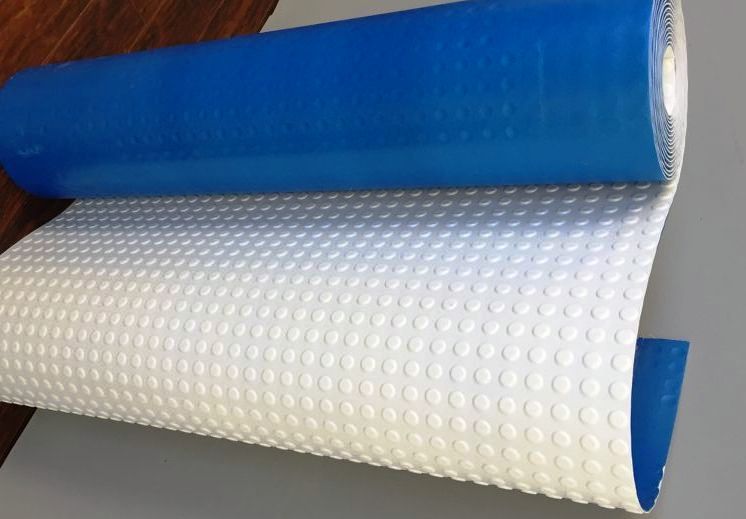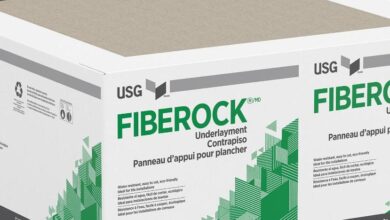Dricore vs. DMX

Installing a subfloor or underlayment is something you should think about, whether you are building or rebuilding a basement.
Because it takes more time and labor to build a basement floorboard from scratch, most people choose to install basement subfloors like DMX or Dricore instead.
Numerous benefits accompany a subfloor in a basement. It stops moisture from leaking into the floor covering from the concrete or slab. Additionally, some subfloors help with heat insulation.
You can utilize a variety of subfloor products in your basement. Dricore and DMX, however, stand out as two of the most well-liked options.
Despite the fact that they both perform the same task, they differ greatly. We will go over these distinctions in the tutorial below, so you can make an informed decision.
Dricore: What is it?
Dricore is the most clever way to finish a basement, according to its manufacturer. However, to what extent is that true?
A substance called Dricore is used to shield floors and furniture against moisture that could seep through concrete surfaces. The air-gap technology in this product keeps moisture inside and prevents it from escaping.
By raising the floor above the concrete, a Dricore subfloor provides additional cushioning against the hard concrete. It ensures that the floor feels warmer by offering some insulation as well.
Selecting a Dricore subfloor has various advantages. It’s easy to work with, to start with. That implies you shouldn’t need much time for installation.
You will see that Dricore’s underbelly and top are very different from one another. The function of the bottom is to keep moisture contained.
Conversely, the top side can accept any type of top flooring material. This is a big benefit since there are lots of top-floor possibilities available.
In addition to keeping concrete moisture away from the above story, Dricore is an extremely resilient flooring. It is strong enough to support the weight of exercise equipment, pool boards, and even heavy traffic.
Dricore is a great flooring material to use if you want to turn your gym into a fitness room because it can handle the extra weight.
DMX: What is it?
An underlayment with dimples, called DMX Airflow, can be utilized to stop moisture from seeping through from the concrete to the upper floor. Not every underlayment product is like DMX.
Not only does the recessed shape retain moisture, but it also eliminates the chance of mold growth by allowing it to dissipate.
Additionally, the floor is comfortable to walk on because of the soft foam. Its ability to create a very silent floor is one of its primary features. The DMX has an air gap design that absorbs moisture from concrete, just like the Dricore.
You may install a top floor in your basement without using OSB or plywood if you use this underlayment. A vast variety of top floors, including carpet, engineered hardwood, and laminates, can be installed over DMX.
DMX has to be at the top of your list if you value an underlayment that is simple to operate. Fitting and cutting are simple. There is no need for any specific tools.
It is 100% waterproof since it is held together with a unique tape and is waterproof on both sides. It’s also important for you to know that DMX Airflow has a 25-year warranty. This is a company that genuinely believes in its offerings.
What distinguishes them?
- R-Value
The R-value for Dricore is 1.44. This is for the standard version. Additionally, they have an R+ with a 3 R-value. The extruded foam layer in the latter one contributes to its higher R-value.
At 1.3, DMX’s R-value is lower.
In comparison to standard Dricore and DMX, the R+ version of Dricore offers significantly better resistance if you are concerned about insulating properties.
- Style
Dricore’s dimpled membrane, which is affixed to an OSB surface, makes the floor more comfortable for footfall.
DMX is composed of two membranes. The two membranes are positioned between the foam.
- Water Resistance Features
The underside of Dricore is intended to have an air gap. On the other hand, during installation, the seams between two Dricore boards are exposed.
To top it all off, Dricore seams are composed of wood. Water or moisture can easily penetrate wood, which will eventually reach the upper floor. One of its primary flaws is this.
In contrast, DMX has a unique waterproof tape that needs to be used to cover any exposed seams. In contrast to Dricore, which has exposed seams that allow moisture to seep through, DMX is completely waterproof.
Another distinction is that Dricore is just waterproof on the inside, but DMX is waterproof on both sides.
The main objective of Dricore and DMX is to stop moisture from getting to the top floor. Dricore isn’t completely waterproof, though, which gives DMX an advantage over rivals.
- Strength of Compression
Up to 6,642 pounds per square foot of compression strength can be achieved using Dricore.
With a compressive strength of up to 8,000 pounds per square foot, DMX is more robust. This option, with its increased compression strength, is excellent if you plan to place large objects on your floor.
Density
Because it is thicker, Dricore will elevate the floor level somewhat. An OSB board sitting atop the dimple membrane is mostly to blame for the thickness increase.
Because DMX is much thinner than other options, doors won’t be impacted. If your doors are quite low, you should be extremely careful about thickness.
What similarities are there between them?
Here are some characteristics that each of these subfloor materials has, despite their differences.
- Simple to Install
The ease of installation for both Dricore and DMX depends on your selection. All you have to do for Dricore is lay the boards down and attach them.
Regarding DMX, there is a certain amount of seam taping. However, you won’t have to spend a lot of time on it.
- Cozy and cozy
Both DMX and OSB are designed to provide increased comfort when walking on a finished floor; DMX has foam, whereas OSB has a board. These materials also guarantee adequate comfort.
It is beneficial to have some insulating material in between since concrete can get quite cold. The little difference in R-values between the two subfloors results in about equal warmth being delivered.
- Dimple-Style
Only the underside of Dricore features a dimple design. Nevertheless, it’s reasonable to conclude that the dimple membranes in both choices.
The dimple-design membrane makes sure that moisture that has been trapped evaporates, to highlight what we talked about before. You can therefore be sure that your basement will not develop mold if you choose one of these two subfloors.
- Harmony with Upper Floors
The fact that both materials work well with a variety of materials is another similarity. This is crucial since it guarantees you have no restrictions when selecting a top floor material, such as laminate or carpet.
Benefits of Dricore
- The technology used for air gaps is quite remarkable. It always keeps your floors dry and prevents moisture from reaching the upper floor. This is extremely advantageous for a concrete-floored basement.
- The OSB’s presence guarantees much softer floors. Dricore is a huge improvement if you’re used to hard concrete.
- The floor will get warmer thanks to a Dricore subfloor. As a result, you can go barefoot without being concerned about your toenails freezing.
- A multipurpose subfloor is Dricore. Hardwood, tile, carpet, and laminate flooring can all be installed.
- It’s a sturdy subfloor that can support large objects.
Drawbacks for Dricore
- Dricore costs a bit more than other subfloors. If money is tight, you ought to look into other possibilities.
- Regular Dricore is inferior to Dricore R+.
- One risk element is the exposed seams. Wetness has the ability to seep through and harm OSB.
Benefits of Airflow DMX
- This floor can support larger loads and is far more resilient than Dricore.
- It has complete waterproofness. A special DMX waterproof tape is used to seal the seams. It is also dual-sided waterproof.
- The underlayment’s dimples encourage moisture to evaporate, which is a great way to stop mold from growing.
- Installing it is quite simple.
- It helps make floors warmer.
Drawbacks of DMX Airflow
- After installation, several users have complained that the DMX airflow feels mushy.
- In comparison to most underlayment materials, it has a lower R-value.
DMX vs. Dricore: Which is Better?
Between these two flooring materials, there is fierce competition. Dricore is thicker and has a higher R-value. DMX, on the other hand, has a stronger compression force and is more waterproof.
You must consider your selections and decide which aspects most interest you. Hopefully, the detailed information provided above will enable you to make an informed choice.

